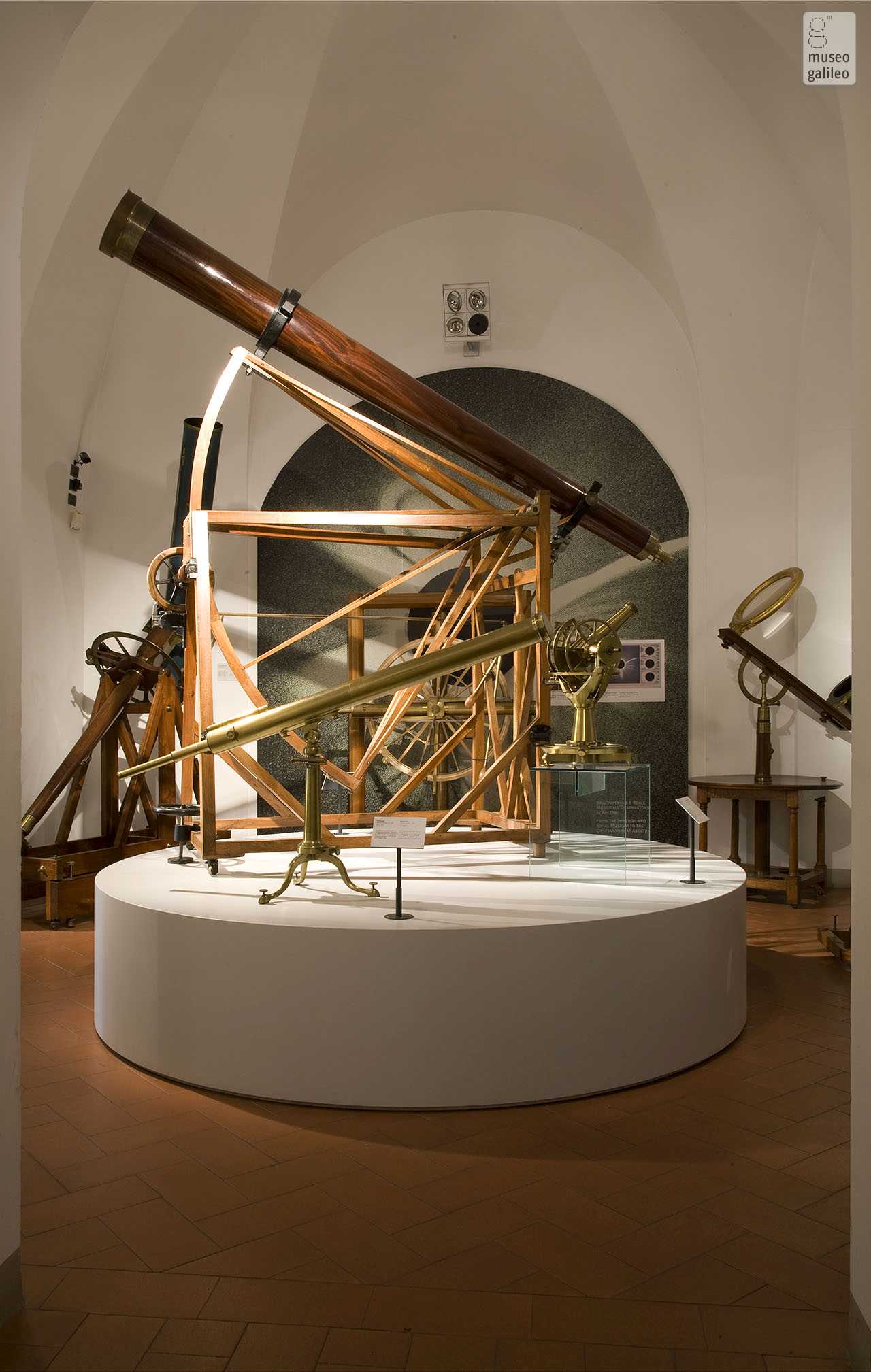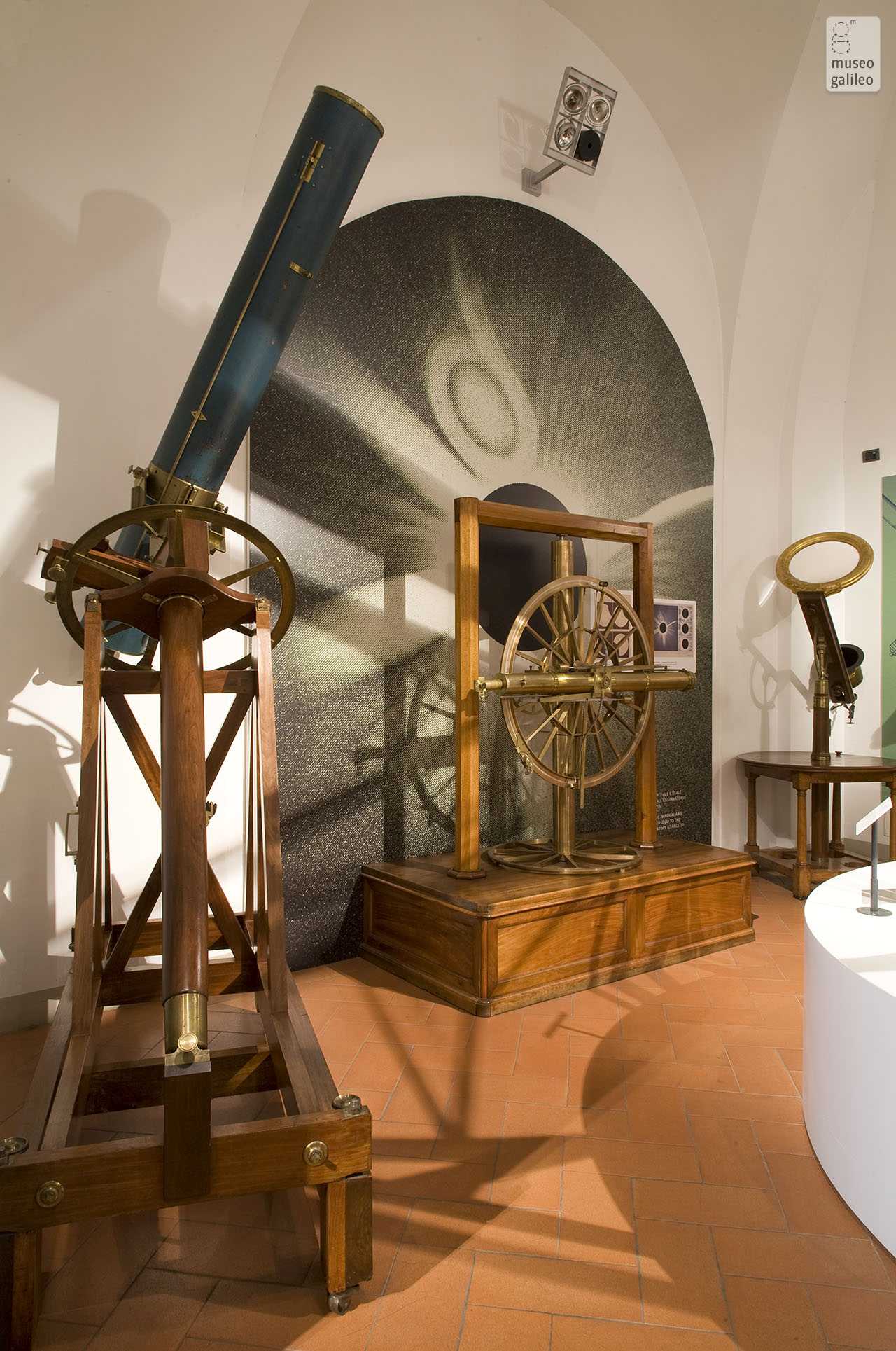Call us for more information
055 222431The Cappa


Following the complex political events connected with the French occupation of Tuscany, the Museum became an institution of the Kingdom of Etruria. It was commissioned by the Grand Duke of Tuscany Pietro Leopoldo, while in 1807 the Queen of Etruria, Maria Luisa of Bourbon, consecrated the “Royal Museum” to public education, establishing six professors there.
Also in 1807 Domenico De Vecchi, one of the professors who settled there, held the theoretical and practical astronomy course, as well as carrying out astronomical and meteorological observations. In fact, De Vecchi dedicated himself to the “specula” with which the museum was equipped, dedicating himself to the observation of the positions of the stars, comets, eclipses and occultations, with the aim of studying time and longitude.
Upon his death, he was succeeded by the Frenchman Jean-Louis Pons, who became famous for the discovery of comets in Marseille and, during his stay in Florence, continued to discover others. In 1831, Grand Duke Leopold II called the Modena optician G. B. Amici to direct the Florentine observatory. The latter, already known in the field of astronomy and geodesy for his objectives and eyepieces, brought with him from Modena other disciples who contributed to reviving the traditions of optics and precision mechanics in Florence.
He was also responsible for the construction of two telescope objectives which still exist at the Observatory. In 1859, he was succeeded by his disciple G. B. Donati. Donati resumed observation of the sky and proposed the construction of a new observatory on an elevated place near Florence. The choice fell on the Arcetri hill, near the villa “Il Gioiello” where Galileo spent the last years of his life. On 27 October 1872 the Observatory was inaugurated and Donati himself undertook to put it into operation function, but unfortunately in 1873 it was struck down by cholera.
He was succeeded by the German Ernst Wilhelm Tempel, a lithographer and great astronomy enthusiast: he dedicated himself to the discovery and observation of comets, small planets and nebulae, of which he made a notable quantity of drawings and important surveys, which earned him in 1879 the royal prize of the Accademia dei Lincei. The direction from 1895 to 1921 passed to Antonio Abetti who, with the new and complete equatorial mount built for Amici’s objective, carried out numerous observations of planets and comets. In 1921 the Observatory’s activity began to focus particularly on astrophysics research, so much so that it took on the official name of “Astrophysical Observatory” and Giorgio Abetti, Antonio’s son, took over its direction.
In 1924 the Observatory was upgraded with a solar tower, dedicated to the memory of G.B. Donati, 25 meters high equipped with a spectrograph and a spectroheliograph and the Amici objective was also replaced with a more powerful one, allowing the Observatory to carry out research into solar physics and stellar spectroscopy. In 1925 Giorgio Abetti was appointed professor of astrophysics at the University of Florence, while the following year, with a decree, the observatory became part of the state observatories.